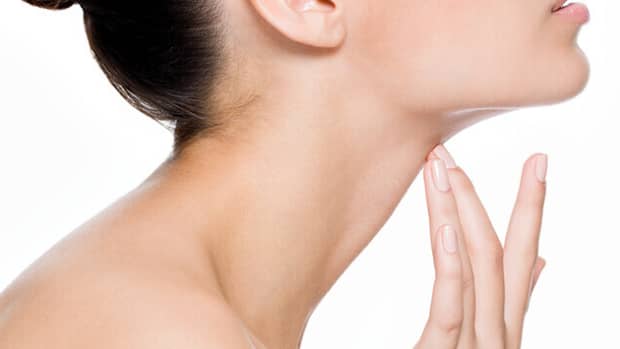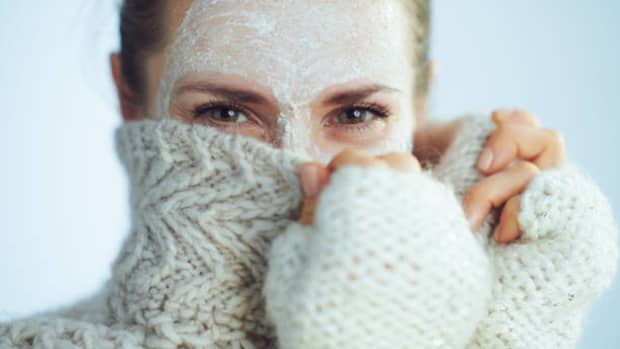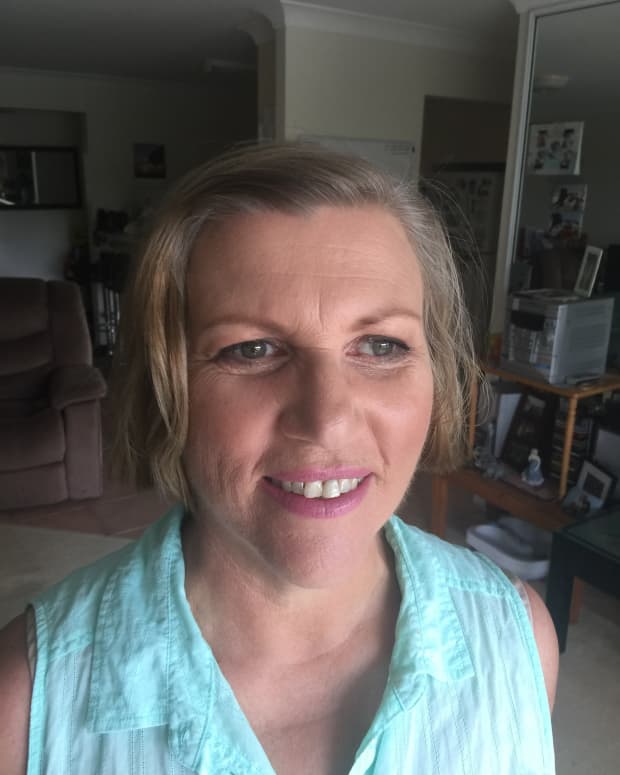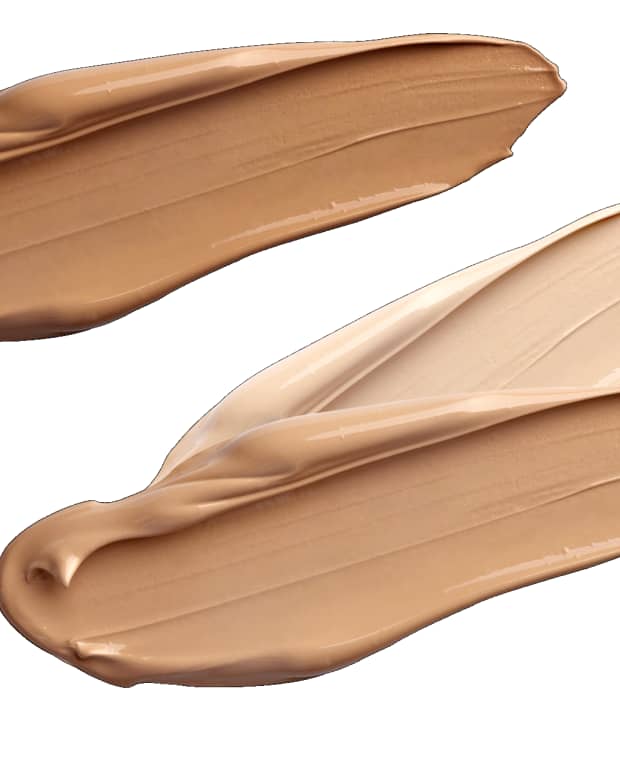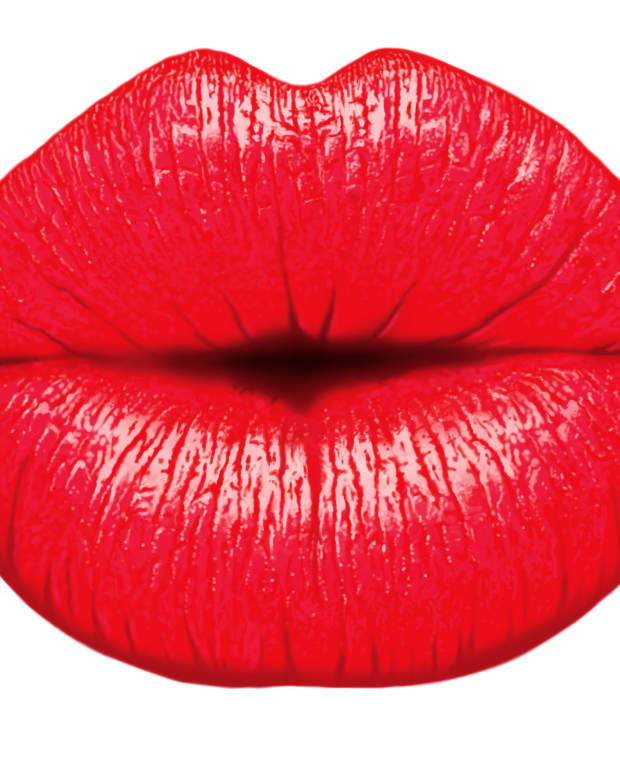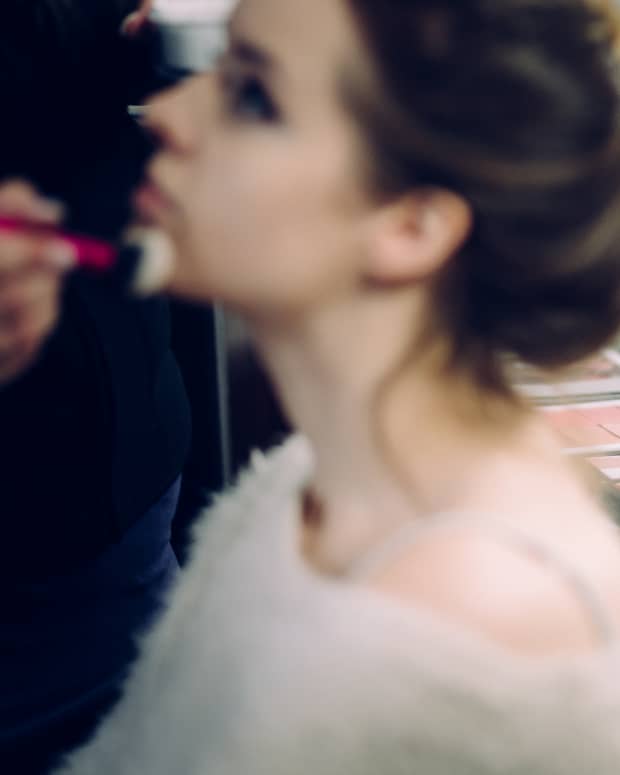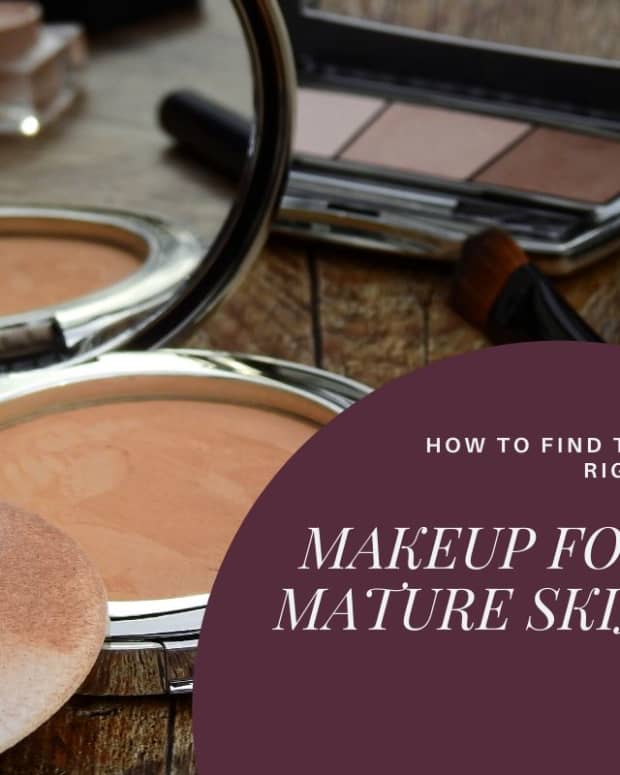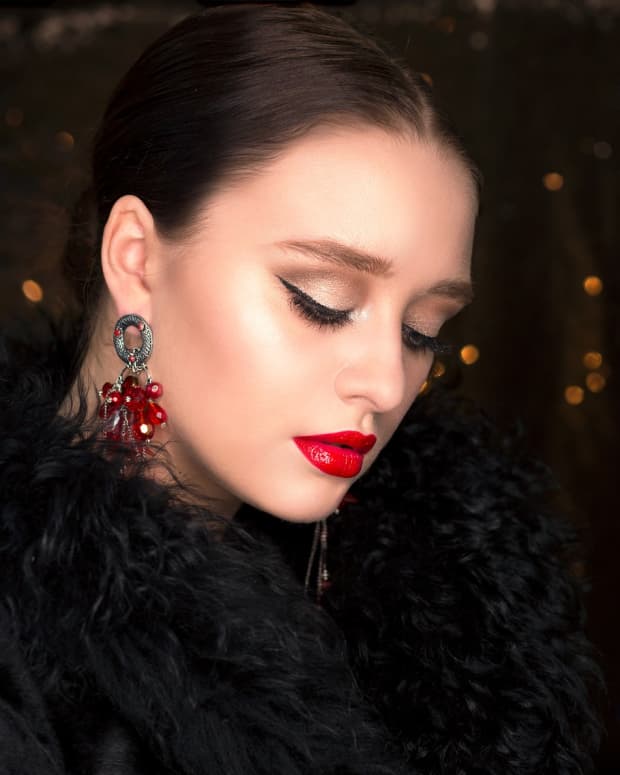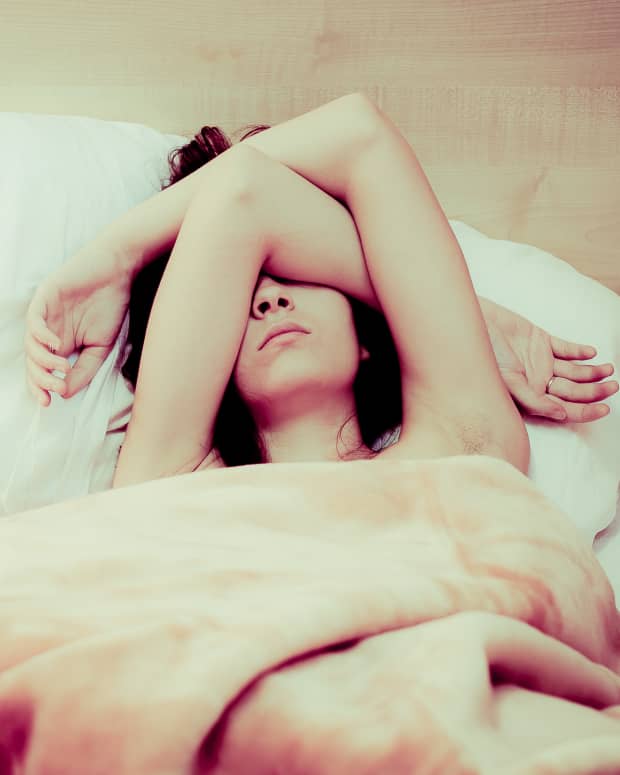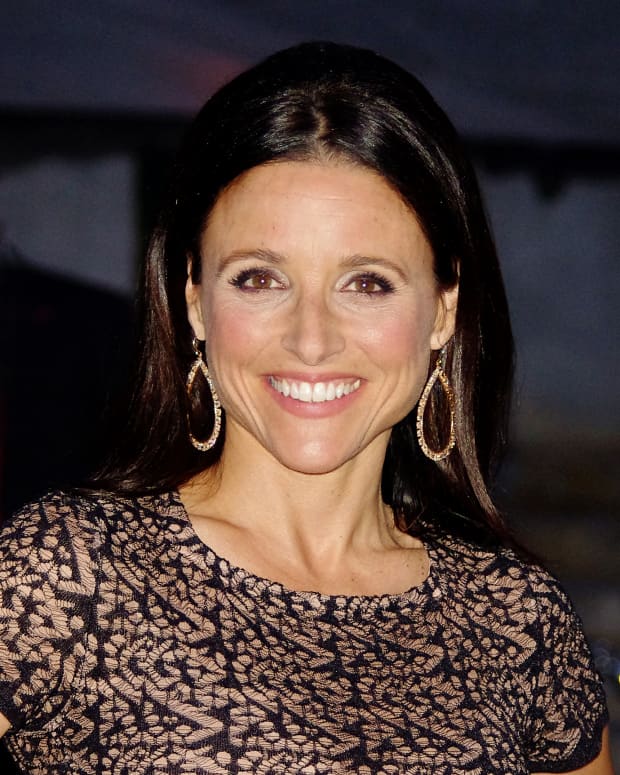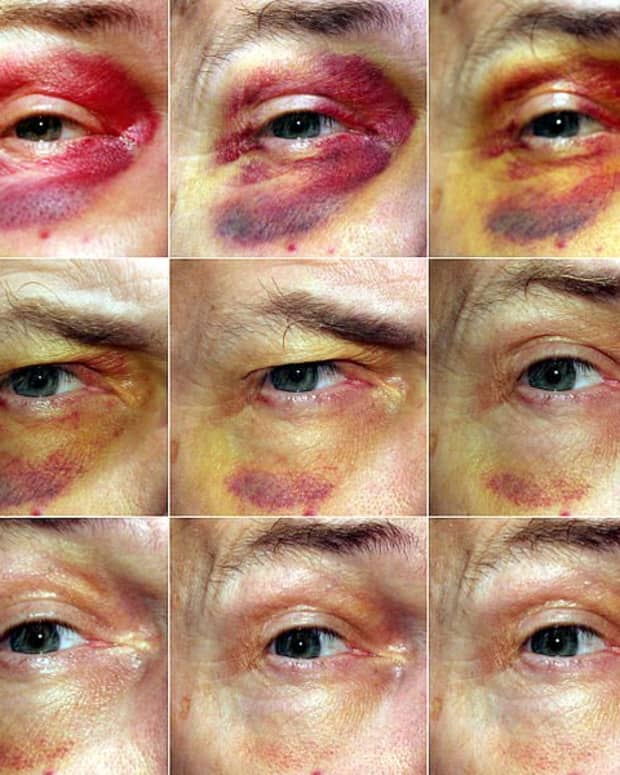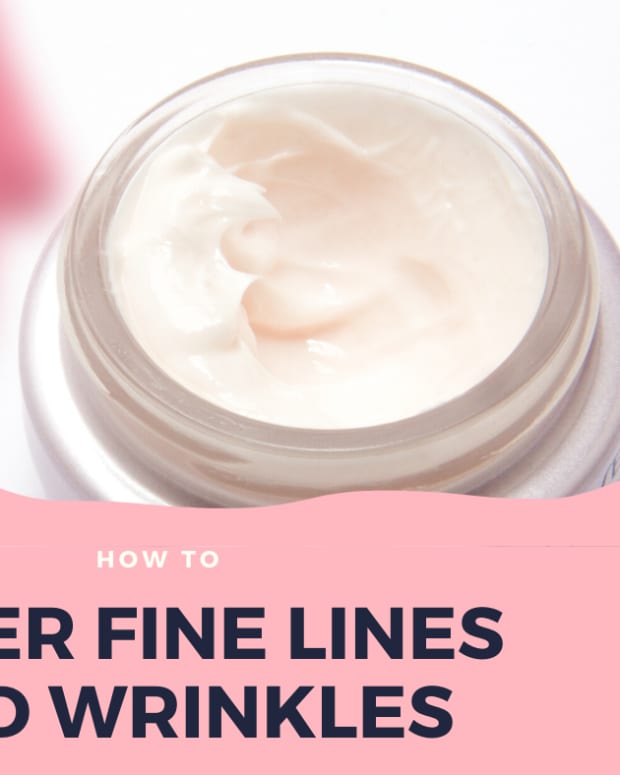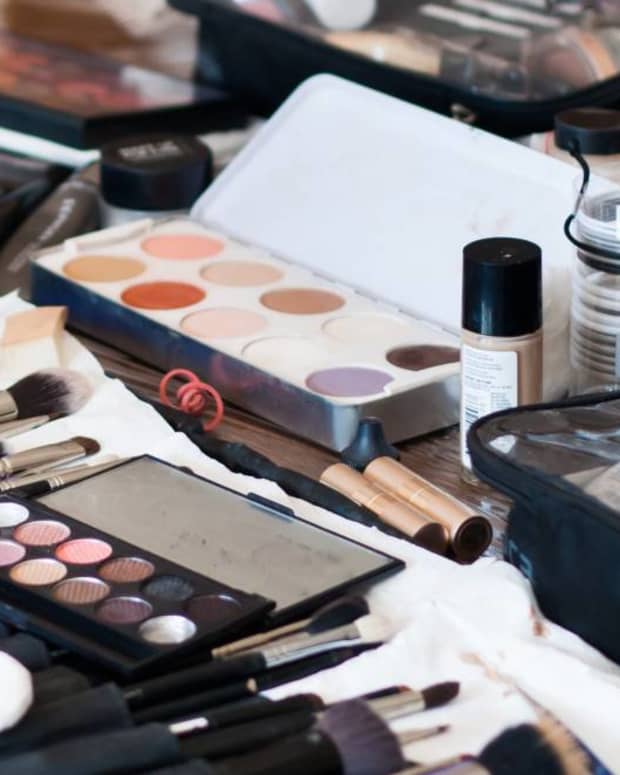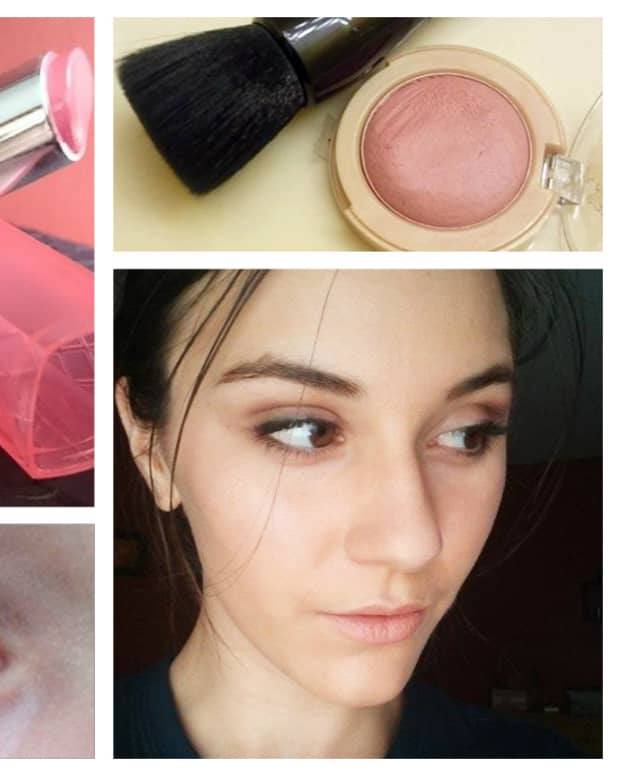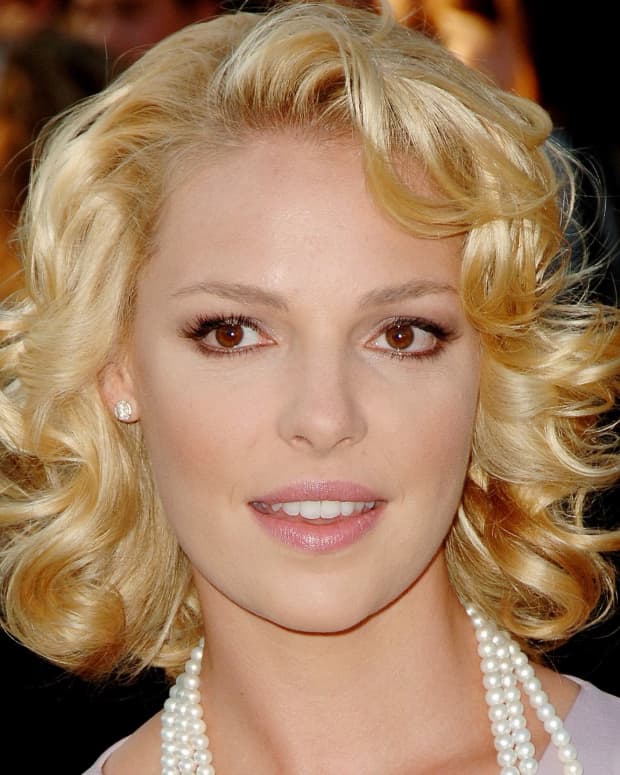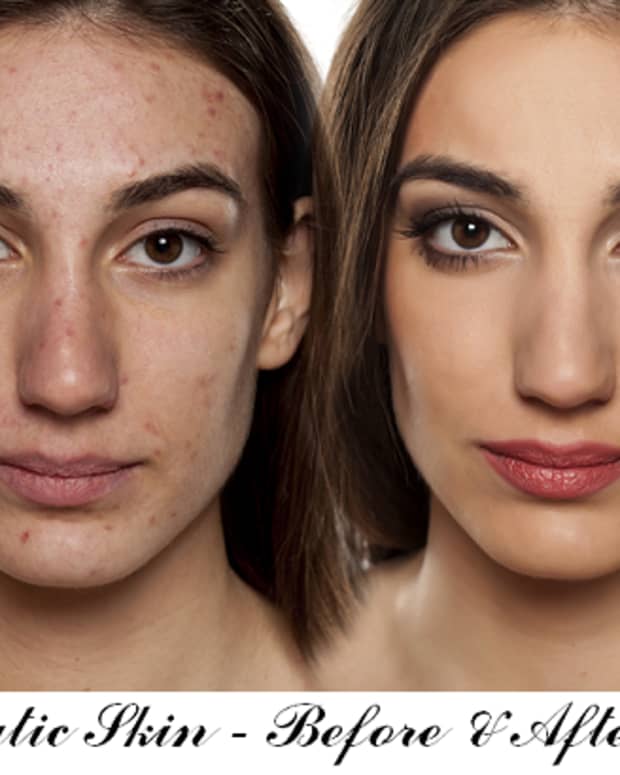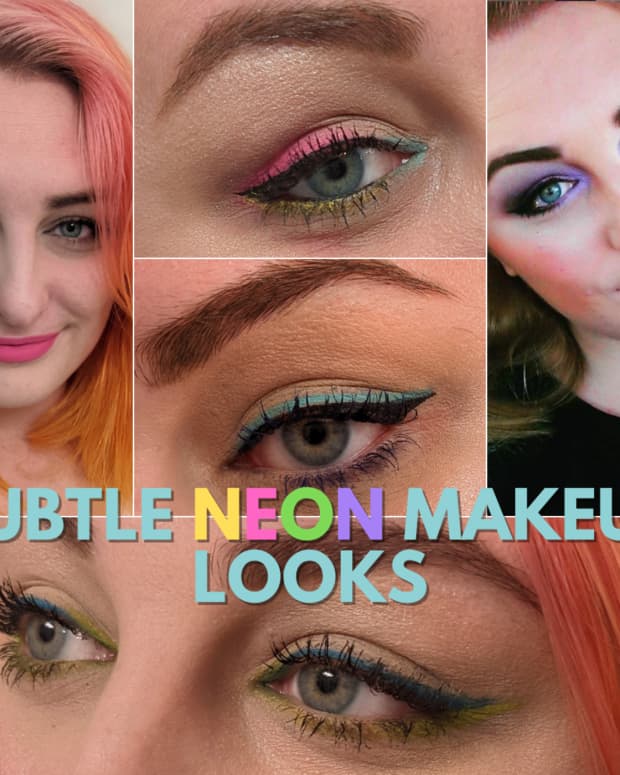How to Apply Makeup to Mature Skin
A beauty consultant by profession, Jayne has been advising on correct skin and hair care, makeup, and other cosmetics for almost 20 years.

No matter how old you are, a full makeup can still enhance your looks. It’s just a question of knowing which products you need and how to apply them.
Photo by BBH Singapore, via Unsplash
Makeup and Mature Skin
Helena Rubinstein was fond of saying, “There are no ugly women, only lazy ones.” She was referring to those who can’t be bothered to make the most of themselves with makeup and other cosmetics.
The trouble is, makeup tends to make us look older than we really are after a certain age. Instead of detracting from wrinkles and sagging contours, it accentuates them. Before long, the only makeup we dare to wear—if any—is tinted moisturizer and cream blush.
These products work well for women of all ages. They even out skin tone and add color to the cheeks. But, when you're dressed up to go out, you understandably want a little more. After all, what's the point of a lavish gown and chic coiffure if your face is practically naked? That's when you start to look like one of Helena Rubinstein's "lazy ones."
But there's no need for it. A full makeup can still look good on an older woman; it’s just a question of knowing which products you need and how to apply them.
Preparing Mature Skin
But before you can apply makeup, your skin must be in tip top condition, even if it’s no longer flawless. Age spots and broken capillaries are easy to cover up, but only if the skin is exfoliated and well hydrated.
Exfoliating improves overall skin texture, which determines how evenly your makeup will go on.
Moisturizer plumps skin up to make lines and wrinkles less prominent. For best results, apply before your toner has fully dried.

Moisturizer makes lines and wrinkles appear less prominent.
By Stux (https://pixabay.com/en/cream-skin-care-eye-cream-194116/)
The Importance of Foundation Primer on Mature Skin
Why Use Primer?
A foundation primer is essential. It minimizes the appearance of large pores, evens out skin tone to some extent, and helps prevent foundation settling into lines and wrinkles, as well as keeping it looking fresher for longer.
Which Primer?
But to prevent pilling, separation, and flaking, your primer and foundation must be compatible.
If you intend to use a silicone-based foundation, which lasts longest on the skin and leaves an exceptionally smooth finish, you'll need a silicone-based primer. In case you're unsure, read its list of ingredients; it's a silicone-based product if components with names that end in the suffixes -methicone (e.g. dimethicone or cyclomethicone) and -oxane (e.g. trisiloxane or silsesquioxane) appear at or near the top of the list.
By the same token, use only oil-based foundations with oil-based primers. These are marketed as "moisturizing" or "hydrating" products, with their main components ending in the suffix -oleate.
Water-based foundations, generally recommended for problem skin, are not the longest-lasting and provide little in the way of coverage. However, those containing significant hydrating ingredients can leave a dewy sheen even on dry, mature skin. But, again, they may only be applied with water-based primers; this follows the well-known rule that water and oil/silicone do not mix well.
Foundation
There are many types of foundation, but the most suitable for mature skin are liquid and cream products.
Your aim should be to achieve good coverage using as little product as possible—less is always more where mature skin is concerned.
Liquid Foundation
If your complexion is relatively clear with few blemishes, a liquid foundation will probably fulfill your needs. Minor flaws can be covered by layering, which may save you having to apply concealer. If you find yourself applying thickly, you should try a cream foundation instead.
Cream Foundation
Cream foundation is more opaque and provides better coverage for age spots and broken capillaries.
Read More From Bellatory
Although you'll still need concealer to completely hide such blemishes, you won't need as much as you would with liquid foundation.The trouble with concealer is that it looks “caked” if more than a little is applied.
Another advantage of cream foundation is its superior moisturizing properties, so consider this if your skin tends to dryness.
If cream foundation is a tad too heavy for your liking, adjust its consistency by mixing with primer.
Whether you choose cream or liquid foundation, make sure it matches your skin tone exactly for best results.
How to Prevent Foundation Settling into Lines and Wrinkles
This will be less of a problem if you manage to find a silicone-based product that works well for you, but, in general, foundation always settles into lines and wrinkles to some degree, no matter what you use or how you apply it.
When this happens, gently blot with a Q-tip before fixing with powder.
Or, if your lines aren’t too deep, press your middle finger lightly against the skin with a slight rolling motion. This also disperses concealer that has settled into lines.
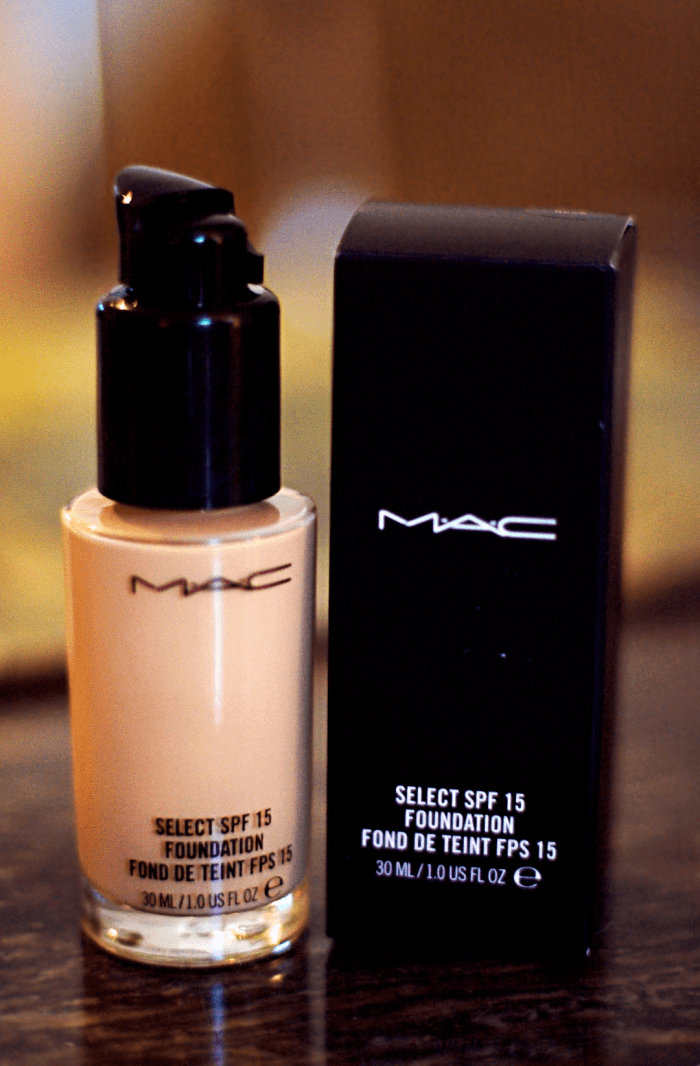
The most suitable foundations for mature skin are liquid and cream products.
Idhren (CC BY-SA 2.0) via flickr.com [brightness and contrast modified]
Concealer
Unless it’s a color corrector product, always apply concealer over your foundation. That way, you’ll only apply it where your foundation can’t provide enough cover. Apart from that, you won’t ruin its perfect placement, which you would if you were to apply foundation on top of it.
When used to cover flaws, your concealer should match your foundation exactly.
Covering Flaws (Like Age Spots)
Concealer is completely opaque and looks “caked” if too much is applied. The best way of controlling the amount you put on is by using a rounded concealer brush.
Just dab the product onto the flaw and work it into your foundation with the tip of the brush until it’s invisible.
Covering Dark Circles
If your under eye circles are very dark, use a yellow color corrector beneath your foundation to neutralize their bluish-purple tone. Add regular concealer only if your dark circles are visible through your foundation.
Don't try camouflaging dark circles with a concealer lighter than your complexion, since this will do little more than accentuate them.
Using Concealer as Highlighter
Because concealer provides a natural-looking, matte finish, it works much better as highlighter on mature skin than opalescent or illuminating products. Anything that creates a glitter or shimmer effect emphasizes lines, wrinkles, and drooping contours.
To highlight with concealer, use a shade two tones lighter than your complexion. Liquid products provide the best finish and can be layered when serving as concealer and highlighter (e.g., highlighting the tops of cheeks and the bridge of the nose while camouflaging broken capillaries in these areas).
If you find that even liquid concealer is too heavy for large areas like cheeks, try using cream foundation two tones lighter than your complexion instead.
Regardless of which product you use, always blend well with a rounded foundation brush or a wedge-shaped sponge.
Tip: For an instant lift, use concealer to set highlights at mouth and outer eye corners.
Concealer for Covering Broken Capillaries
To play down broken capillaries, wear a green color corrector (sometimes referred to as "green concealer") under your foundation. You'll still have to apply regular concealer to completely hide them, but not as much.
If your broken capillaries are more purple than red, you’ll need a green-yellow color corrector.
Keep the amount of color corrector you apply to a minimum or it will shimmer through your foundation and concealer (if used).
Face Powder
You’ve probably heard otherwise, but face powder is your best friend. Not only does it fix foundation, it also leaves a matte finish—shininess will highlight every line, every wrinkle, and every sagging contour.
It’s true that powder can leave the complexion dull and chalky, and accentuate lines and wrinkles, but it depends on the product used and how it’s applied.
Which Powder Is Best for Mature Skin?
Translucent powder always works well on mature skin, but if you prefer more cover, choose one that matches your complexion or foundation exactly. Loose products are best for reducing shine and are generally more light textured than pressed products. As such, they don't collect in lines and wrinkles quite as readily.
Avoid products with reflective particles. According to advertising these detract from lines and wrinkles, but they actually do the opposite.
How to Apply Powder to Mature Skin
Whether pressed or loose, apply with a large powder brush. Instead of literally brushing on, dab from forehead to chin, reloading the brush as little as possible. Always work downwardly. If you don’t, the tiny white hairs that cover your face will stand on end, creating the chalky, mask-like effect you want to avoid.
After you’ve finished, gently pat your face working from forehead to chin with a clean, fleecy puff to pick up any excess powder. In case you're going to be photographed with a flash, this also helps prevent "flashback," which is when face powder—particularly translucent and colorless finishing products—shows up on photos as chalky patches.
How to Prevent Powder Making Your Face Look "Flat"
If you feel that powder makes your face appear over-mattified or “flat," you’re either wearing too much or you need to set highlights at the center of your forehead, the bridge of your nose, the tip of your chin, and the tops of your cheeks-—do this with concealer as described above.
Alternatively, after powdering and applying blush, add a very light misting of thermal water to give your complexion a more dewy quality. This proves counterproductive for some women, but it's worth experimenting with.
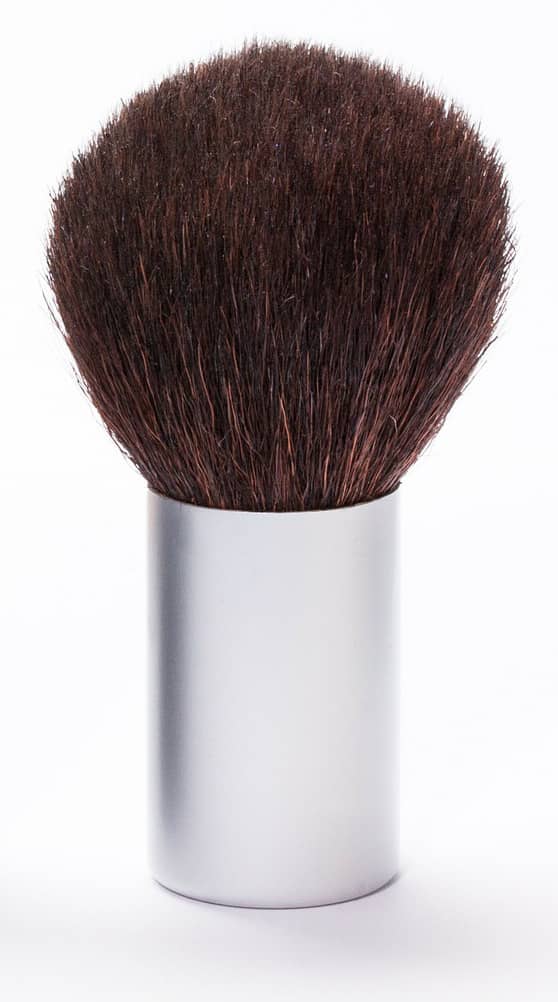
Whether your powder is pressed or loose, apply with a brush.
By Stux (https://pixabay.com/en/cosmetics-makeup-make-up-brush-259181/)
Powder Blush
When wearing foundation, use a powder blush rather than a cream product.
As with face powder, you need a very light textured product for good results.
Defining your cheekbones with strong colors can have a less than positive effect after a certain age, making your face seem hard and hollow. Instead, use softer shades like apricot and rose depending on your natural skin tone, and always blend well. A more diffused look will make you appear younger and fresher.
If you usually sweep a blush product beyond the apples of your cheeks to shade and contour, try using a pressed powder two tones darker than your complexion instead. As long as you apply sparsely, it won’t emphasize lines and wrinkles around the eyes and hairline, which is often the case with even the lightest textured powder blush.
Dust over your blush or contouring product with a little powder after you’ve finished.
Lips
Lips become thinner with age, with wrinkles appearing along the upper contour.
Lipstick
To make lips seem fuller and smoother, wear light toned, satin finish lipsticks. Be careful with bright colors, and abandon dark colors and matte products—they make lips look thinner. Another problem with matte lipsticks is that they never look good with a matte base, which older women tend to favor.
Lip Gloss
Lip gloss plumps lips up, but it also highlights every wrinkle, so avoid at all cost.
For the same reason, be careful with shimmery and dewy textured lipsticks, too.
Lip Liner
Lip liner stops lipstick feathering or "bleeding" into wrinkles, but for a rejuvenating effect, use a concealer pencil one or two shades lighter than your complexion instead.
Not only can it prevent feathering, it plumps lips up, and works as a corrective highlight to help diminish the appearance of wrinkles. Apply from the bow of the lip and blend to the mouth corners. Never use a white pencil for this—it creates an artificial effect and looks unprofessional.
Should You Use a Lip Brush?
It’s a good idea to apply lipstick with a brush for accuracy and to make it stay on longer. But if you find the hard contours a brush leaves too harsh, apply straight from the tube for a softer look.
Eye Makeup
Eyeliner and Mascara
Softer colors and textures create a diffused definition that always flatters a woman of a certain age.
Therefore, use brown or dark gray eyeliner and mascara in place of black.
If you find that liquid and gel eyeliners look harsh or overshadow the natural beauty of your eyes, use kohl instead.
Eye Shadow
Use only matte powder eye shadow. Creamy and glossy products accentuate wrinkles and make the skin appear crepy.
If the colors you’ve always worn start to make your eyes look dull and tired, try going a couple of nuances lighter. If you’re completely unsure of which colors to choose, you’ll never go wrong with subtle nude or soft earth tones.
Ten Basic Makeup Tips for the Mature Woman
- Before applying makeup, your skin should be exfoliated and well moisturized.
- A foundation primer is essential for mature skin.
- Best is a foundation that provides just the coverage you need while allowing you to keep concealer to a minimum.
- A loose, very fine textured face powder is less likely to collect in lines and wrinkles. For best results, apply with a large powder brush.
- When wearing blush, soft colors like rose and apricot are more becoming.
- Satin finish lipsticks don’t accentuate lip wrinkles.
- For a softer, more flattering finish, apply lipstick straight from the tube instead of with a brush. And always line your lips to avoid "bleeding."
- If black eyeliner and mascara seem too harsh, create a more diffused look with brown or dark gray.
- Switch liquid and gel eyeliner for kohl.
- Use only powder eye shadow.
This content is accurate and true to the best of the author’s knowledge and is not meant to substitute for formal and individualized advice from a qualified professional.
© 2014 Jayne Lancer
Comments
Jayne Lancer (author) from West London, UK on July 07, 2019:
@Amy B Hunt: Thank you for commenting and your kind words. To answer your question, I've expanded the section on primer.
Basically, silicone creates a barrier and water does not blend with oil or silicone. Mixing these up would in most cases cause pilling, separation or flaking. I'd nevertheless recommend trying out the combination you've bought to see how it wears throughout the day,
Amy B Hunt on June 06, 2019:
Thank you so much for this information I found it to be very helpful. I have never been one to wear makeup on a regular basis, special occasions only, but now that I have entered my fifties I am feeling that a little makeup on a daily basis might help me look and feel better. Your advice and tips are just what I was looking for. I do have a question..you mentioned using silicone based products together, primer and foundation, can I ask why? I just bought both today and didn’t check that they are.
LYNDA LUTZ on May 21, 2019:
Thank you for this great article. I have not worn make-up for a long time. Now that I am 72, I needed some advice. Everyone says I look much younger, but still I need advice. I have gotten some skin blemishes from the sun and need to cover those, but my skin is still oily! Thank you.
Pamela Oglesby from Sunny Florida on June 12, 2018:
I appreciate all you wonderful suggestions. Great article.
Deborah on June 12, 2017:
Fantastic information. Thanks so much!
Gloria on May 01, 2017:
Thank You....you were very informative! I definitely need a lift (no pun intended) and your honestly is most appreciated.
Crystal Tafralian on April 26, 2017:
Thank you so much for this... You have helped me immensely.
Some of your cautions are exactly what I was doing.... Thank YOU.
LU on April 15, 2017:
THANK YOU SO HELPFUL
Heloneida on January 31, 2017:
Perfect! Thank you very much.
Jayne Lancer (author) from West London, UK on September 03, 2015:
Thank you very much, Ilonagarden!
Ilona E from Ohio on August 30, 2015:
I think your tips are fabulous and love all the illustrative photos.
Jayne Lancer (author) from West London, UK on October 15, 2014:
Hello Audrey, and thank you very much!
Your concealer palette probably consisted of a shade matching your complexion and two color correctors to cancel out unwanted tones. Very basically: green cancels out red (e.g. broken capillaries, acne etc.); yellow cancels out blue and purple (e.g. under eye circles); and blue and purple cancel out yellow and unwanted olive tones (e.g. bruises).
Audrey Selig from Oklahoma City, Oklahoma on October 15, 2014:
Hi Jayne. How great that you are into giving tips on makeup, and I really like this article. I especially like the tips on concealer, as I don't do well on buying concealer. I had some once that had three colors, which was probably right for me. Thanks for sharing your expertise. Sharing hub. Blessings. Audrey
Jayne Lancer (author) from West London, UK on October 15, 2014:
Thank you, Anne! Yes, the right make-up can enhance and improve a woman's looks no matter how old she is. Audrey Hepburn is a great example of this.
Anne Harrison from Australia on October 15, 2014:
thank you Jayne, for this helpful summary. women such as Audrey Hepburn show how you can age gracefully - and still wear makeup!
Jayne Lancer (author) from West London, UK on May 31, 2014:
You're welcome, Divacratus! And thank you for taking the time.
Kalpana Iyer from India on May 30, 2014:
Really helpful makeup tips. Thanks for sharing!



